A few folks have requested the details of my conversion of a dual-axis mounted 1.8m Prodelin offset reflector into a horizon-to-horizon mount. This was a bit of a rush job as I was concerned the city was about about to pass an ordinance to restrict satellite dishes. They eventually did, but not before I completed my 15 dish farm 
The reflector I rescued was originally a Ku-band transmit/receive dish with a massive electronics box that contained all the feed plumbing, the upconverter and downconverter and a skew adjustment motor. This part alone weighed around 30 pounds and was mounted on a tray attached to a very heavy duty feed arm. There was no need for side supports on this monster, because it is such overkill I could likely stand on the feed without affecting the alignment. The feed itself is a work of art and I was determined to salvage this part. Sadly this meant cutting the electronics package into pieces, because I needed some of the plumbing and shims to adapt my LNBs (see later). The resulting dish is shown in the first picture.
The next picture shows the rear side of the reflector. I found an old Ajax motor at a satellite junk yard and the guy was happy to completely empty my wallet for it - all $18 that was there. This was completely rusted and in terrible shape. Still I figured if I was able to get everything up, working or not, I would be grandfathered from the new ordinance. I could always change or fix the motor later. However before I installed the dish, I decided to assess the motor innards. I had to tear everything down to the smallest piece and the actual motor too. That part was encased in rust and had to be soaked in penetrating oil for about a day to get it apart. The gears and axles were almost as bad. Still I was able to recover all the original pieces except for the terminal block for the wires. No big deal.
Miraculously after spending another couple of days off and on, it all went back together and worked perfectly. Ajax motors usually came mounted to a ring adapter for the particular target dish. This was of no use and I simply cut it off, leaving only a steel plate at the top of the motor. The third image is a diagram that resembles the original dual-axis mount. Two actuators are used for azimuth and elevation, with the electronics block having its own motor for skew adjustment. I had thought about keeping these features, but I was dubious that the azimuth actuator would really provide a sufficient range of adjustment (I can see 30W to 180W). The dual-axis' fate was sealed by a pragmatic matter - I already had a 3.5" OD pole mounted to a wall exactly where I wanted the dish, and the dual-axis pole mount needed something much bigger. The city was busy and so was I.
Looking at the diagram again, there is a horizontal bar bolted to the top of the pole mount. I set aside the pole mount for the museum (picture 4) and cut off the rear portion of the horizontal bar (picture 5). I had to enlarge the mounting hole at the bottom of the Ajax polar axis to take a 1" grade 8 bolt that was used as the azimuth axis in the original mount (picture 6). I then cut some angle irons and welded them together to fashion the top polar axis mount, and serve as a declination adjustment (picture 7). We get tons of wind as the house is essentially at the top of a hill, with an unobstructed panorama of the Colorado front range. That inclined me to spend some decent dosh on a lot of grade 8 hardware, including 7/8" threaded rods for the declination adjustment. To date everything is absolutely solid and when the winds blow and shake all my other Ku dishes, the Prodelin stays locked on target without visible motion.
Pictures 8, 9 and 10 show the feeds and LNBs. I wanted to mount an Invacom universal LNB to the original feed. This required some simple adapter machining to couple the feed to the C120 flange on the Invacom. By doing this I was able to salvage a nifty skew scale marked to units of one degree to handle 103W if I ever needed it. But I got tired of climbing on the roof for that bird, so I sidecared a cheapo Ku LNB so I could skew it permanently by 26 degrees. This actually performs quite well, but comparing the front view of the scalars makes this normal FTA-sized LNB look like a toy. The CNRs I get are outrageous.
This has become one of my most treasured dishes, and I am so grateful to my neighbors who complained to the city about the mad scientist next door who was disgracing their cherished world. Without their impetus I probably would have never bothered to contemplate this project.
The reflector I rescued was originally a Ku-band transmit/receive dish with a massive electronics box that contained all the feed plumbing, the upconverter and downconverter and a skew adjustment motor. This part alone weighed around 30 pounds and was mounted on a tray attached to a very heavy duty feed arm. There was no need for side supports on this monster, because it is such overkill I could likely stand on the feed without affecting the alignment. The feed itself is a work of art and I was determined to salvage this part. Sadly this meant cutting the electronics package into pieces, because I needed some of the plumbing and shims to adapt my LNBs (see later). The resulting dish is shown in the first picture.
The next picture shows the rear side of the reflector. I found an old Ajax motor at a satellite junk yard and the guy was happy to completely empty my wallet for it - all $18 that was there. This was completely rusted and in terrible shape. Still I figured if I was able to get everything up, working or not, I would be grandfathered from the new ordinance. I could always change or fix the motor later. However before I installed the dish, I decided to assess the motor innards. I had to tear everything down to the smallest piece and the actual motor too. That part was encased in rust and had to be soaked in penetrating oil for about a day to get it apart. The gears and axles were almost as bad. Still I was able to recover all the original pieces except for the terminal block for the wires. No big deal.
Miraculously after spending another couple of days off and on, it all went back together and worked perfectly. Ajax motors usually came mounted to a ring adapter for the particular target dish. This was of no use and I simply cut it off, leaving only a steel plate at the top of the motor. The third image is a diagram that resembles the original dual-axis mount. Two actuators are used for azimuth and elevation, with the electronics block having its own motor for skew adjustment. I had thought about keeping these features, but I was dubious that the azimuth actuator would really provide a sufficient range of adjustment (I can see 30W to 180W). The dual-axis' fate was sealed by a pragmatic matter - I already had a 3.5" OD pole mounted to a wall exactly where I wanted the dish, and the dual-axis pole mount needed something much bigger. The city was busy and so was I.
Looking at the diagram again, there is a horizontal bar bolted to the top of the pole mount. I set aside the pole mount for the museum (picture 4) and cut off the rear portion of the horizontal bar (picture 5). I had to enlarge the mounting hole at the bottom of the Ajax polar axis to take a 1" grade 8 bolt that was used as the azimuth axis in the original mount (picture 6). I then cut some angle irons and welded them together to fashion the top polar axis mount, and serve as a declination adjustment (picture 7). We get tons of wind as the house is essentially at the top of a hill, with an unobstructed panorama of the Colorado front range. That inclined me to spend some decent dosh on a lot of grade 8 hardware, including 7/8" threaded rods for the declination adjustment. To date everything is absolutely solid and when the winds blow and shake all my other Ku dishes, the Prodelin stays locked on target without visible motion.
Pictures 8, 9 and 10 show the feeds and LNBs. I wanted to mount an Invacom universal LNB to the original feed. This required some simple adapter machining to couple the feed to the C120 flange on the Invacom. By doing this I was able to salvage a nifty skew scale marked to units of one degree to handle 103W if I ever needed it. But I got tired of climbing on the roof for that bird, so I sidecared a cheapo Ku LNB so I could skew it permanently by 26 degrees. This actually performs quite well, but comparing the front view of the scalars makes this normal FTA-sized LNB look like a toy. The CNRs I get are outrageous.
This has become one of my most treasured dishes, and I am so grateful to my neighbors who complained to the city about the mad scientist next door who was disgracing their cherished world. Without their impetus I probably would have never bothered to contemplate this project.
Attachments
-
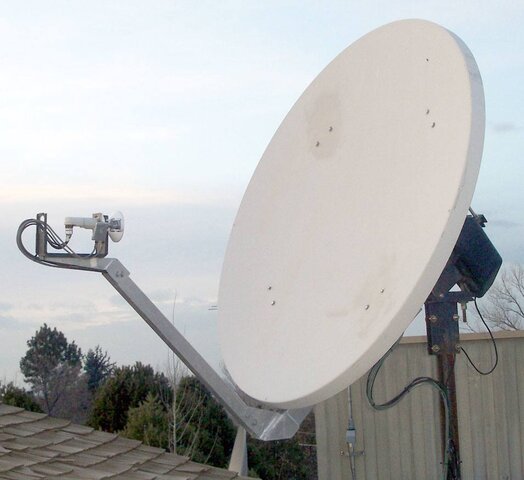 East Front.jpg62.1 KB · Views: 653
East Front.jpg62.1 KB · Views: 653 -
 West Rear.jpg89.4 KB · Views: 783
West Rear.jpg89.4 KB · Views: 783 -
 Schematic.png10.4 KB · Views: 562
Schematic.png10.4 KB · Views: 562 -
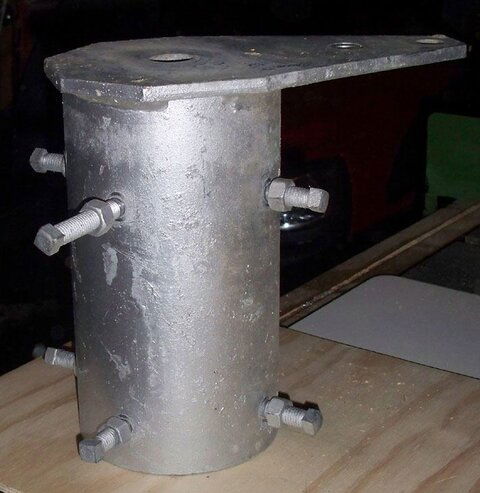 Dual-axis Pole Mount.jpg69.3 KB · Views: 544
Dual-axis Pole Mount.jpg69.3 KB · Views: 544 -
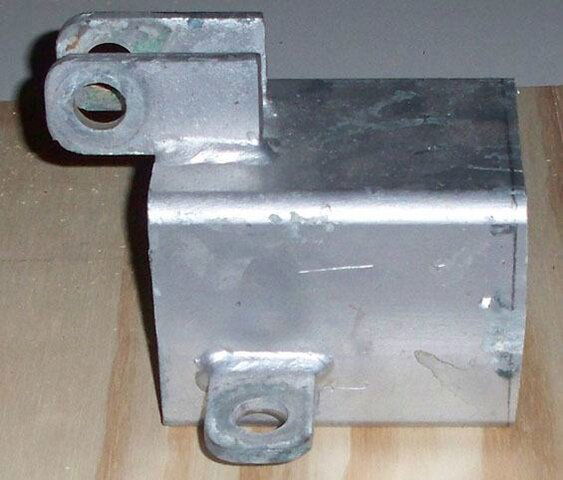 Dual-axis Actuator Mount Scrap.jpg33.1 KB · Views: 499
Dual-axis Actuator Mount Scrap.jpg33.1 KB · Views: 499 -
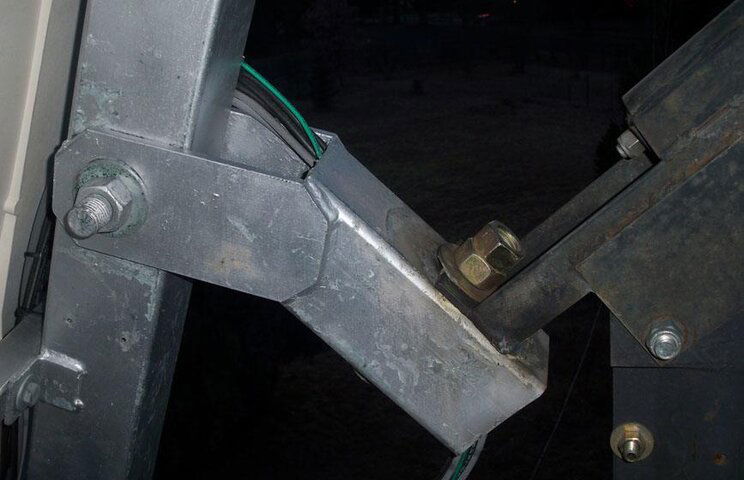 Lower Axis Mount.jpg52.4 KB · Views: 535
Lower Axis Mount.jpg52.4 KB · Views: 535 -
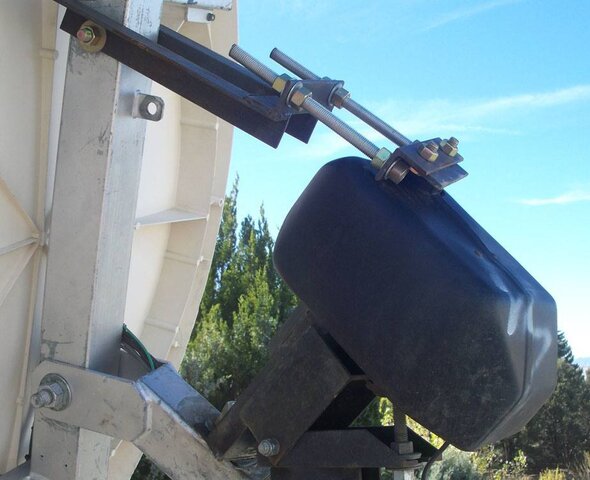 Declination Adjustment.jpg69.5 KB · Views: 614
Declination Adjustment.jpg69.5 KB · Views: 614 -
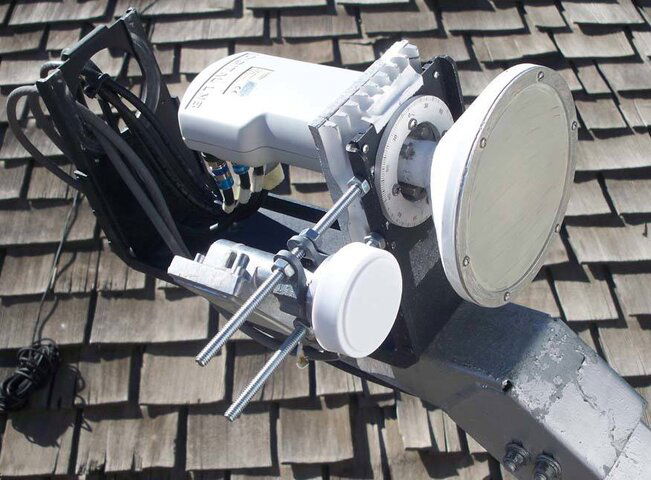 Prodelin LNBs.jpg80.2 KB · Views: 620
Prodelin LNBs.jpg80.2 KB · Views: 620 -
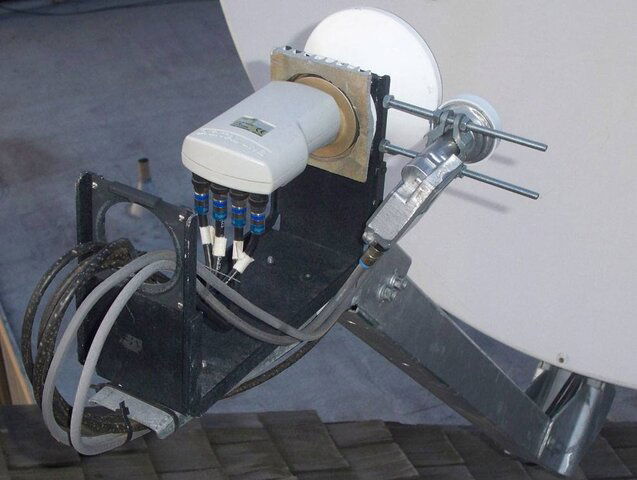 LNBs Rear.jpg66.3 KB · Views: 612
LNBs Rear.jpg66.3 KB · Views: 612 -
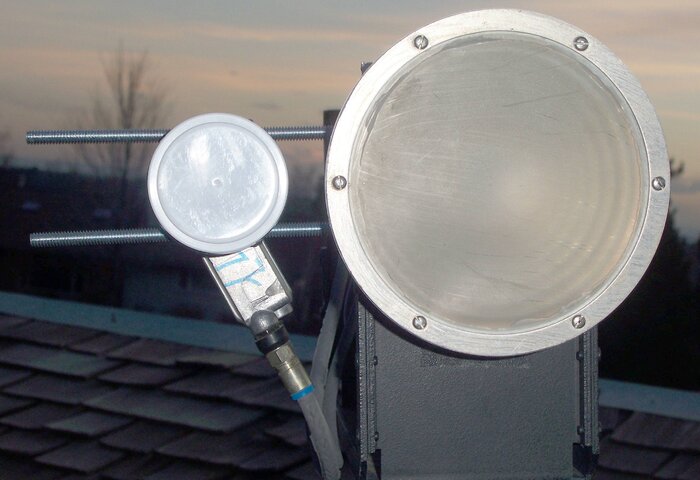 LNBs Front.jpg411.6 KB · Views: 563
LNBs Front.jpg411.6 KB · Views: 563

